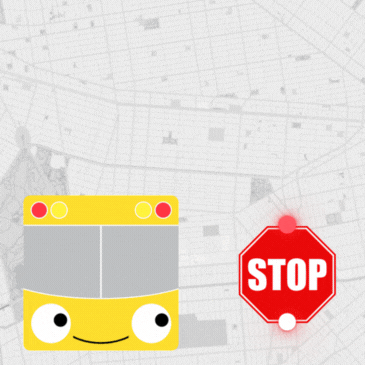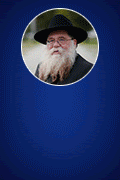
Weekly Dvar Torah: Aharon and Miriam Lighting Up the World
When the twelve tribal princes inaugurated the Tabernacle, each brought generous offerings to represent their tribes. It was a grand celebration—twelve days of pomp, gifts, and holy sacrifices. But Aaron, the High Priest, had no part in it. Left out, he felt a sting of rejection.
So G-d turned to Moshe with a message for Aaron: “Do not be saddened. Your role is far greater. You will kindle the Menora.” Lighting the Menora wasn’t just ceremonial—it was transformational.
“When you elevate the lights…” says the Torah. Each flame on the Menora represented not just a branch of the candelabra, but a soul. And Aaron’s task was to elevate those souls, to ignite the embers of dormant passion and draw forth their inner fire.
The Menora had seven branches, corresponding to the seven emotional pathways of the soul—kindness, discipline, compassion, determination, humility, bonding, and dignity. When Aaron kindled the flames, he wasn’t just lighting oil; he was awakening each soul’s unique path to G-d.
This wasn’t about momentary inspiration. G-d instructed Aaron to ignite the flames until they rise on their own. His greatness lay not in providing light, but in enabling others to become sources of light themselves.
That’s what makes Aaron’s role so profound. A candle on its own is nothing more than wax and wick. The flame—the purpose, the soul—needs to be lit. But if lit correctly, the candle shines long after the match is withdrawn.
This eternal empowerment is beautifully captured in a conversation between the Rebbe and Israeli diplomat Yehuda Avner.
Avner once asked the Rebbe: “What is it that you are trying to accomplish?” The Rebbe pointed to a candle. “What do you see?” he asked.
“A candle,” Avner replied.
“No,” the Rebbe said, “this is a lump of wax with a wick inside. Only when you apply fire does it become a candle. The body is the wax, the soul is the wick, and Torah is the flame. When you apply the flame of Torah to the wick and wax of body and soul, then you have a burning candle, bringing light to the world.”
“Did you light my candle?” asked Avner.
“No,” said the Rebbe, “I handed you the match. Now you can light it yourself.”
This is the true work of Aaron. He didn’t just light candles—he handed the match to every Jew, so each could ignite their own soul and shine independently. The task of the Kohen is not to dominate, but to awaken.
That’s why his lighting was superior to the princes’ offerings. The princes elevated red meat—symbolic of the strong, even raw side of life, associated with Gevura (discipline). Aaron, however, dealt in oil—the symbol of Chochma (wisdom), flowing subtly and deeply. While the tribal leaders raised the physical upward, Aaron drew the spiritual downward, embedding divine light into the world.
Even Moshe had his distinct role. When the Jews cried out for meat, Moshe despaired: “Shall sheep and cattle be slaughtered for them?” G-d instructed Moshe to bring them quail—marbled with white fat, a fusion of red and white, Gevura and Chesed (strength and kindness). Moshe, the ultimate intermediary, combined total submission to G-d with nurturing leadership for the people. In Moshe, the upward and downward flows of divine service became one harmonious cycle.
So, in the desert, three leaders embodied three spiritual roles:
The Princes elevated the world through offerings.
Aaron lit the soul with enduring light.
Moshe fused both realms—he drew sustenance from Heaven while lifting the people up.
And still, lighting the soul remains the most lasting change. To light another is to transform them. And Aaron’s lighting wasn’t restricted to the Menora—it extended to the entire people.
Kabbala teaches that the Menora was not just a candelabrum, but a soul-map. The central stem gathered all Jewish souls into a single source, and the branches represented the different ways Jews serve G-d: some through love, some through awe, others through Torah or Mitzvos. Aaron’s gift was the ability to reach into every soul, no matter the path, and strike the match.
But this legacy of igniting the soul is not Aaron’s alone. It lives on in every Jew. It’s the power to awaken light in others, especially when the darkness seems thickest.
Which brings us to Miriam.
When Miriam, the prophetess and sister of Moshe, spoke out of turn about her brother, she was struck with leprosy and forced into seclusion. But for seven days, the entire nation—over two million people—paused in their journey to wait for her healing. Why?
Because 80 years earlier, Miriam waited just one hour by the Nile. When baby Moshe was hidden in the reeds, she watched, anticipating the miracle she knew would come. She had no doubt of his safety—she was certain of redemption. She wasn’t waiting out of fear; she was watching redemption unfold.
It was Miriam who convinced her father Amram to remarry her mother Yocheved and bring children into a world of Pharaoh’s decrees. “Your decree is harsher than Pharaoh’s,” she told him. “Pharaoh wants to kill the boys. You are preventing any child from being born.”
From that reunion, Moshe was born. The house filled with light. Miriam knew he was destined to redeem. And so she waited by the river not to see if he’d be saved—but how.
For that one hour of prophetic courage and faith, the Jewish people paused for seven days. To honor the one who believed in them before they could believe in themselves. Miriam’s optimism, her courage, and her prophetic vision represent the Jewish woman in every generation—the one who keeps the flame alive.
Like Esther who saved the Jews of Persia. Like Chana who taught us education. Like the mothers in Soviet Russia who secretly arranged Brisen and whispered Shema into their babies’ ears. The Jewish woman is the eternal flame. She doesn’t just hold the match—she passes it to the next generation.
This is the full picture.
Aaron, who kindled eternal flames.
Moshe, who fed the people with heavenly resolve.
Miriam, who believed in salvation before it arrived.
And the Rebbe, who simply hands you the match and says: “Now light your candle.”
Let’s not wait to be lit. Let’s take the match. Strike it against the wick of our soul. Let the oil of our wisdom guide the emotions of our heart. And let the flame rise—not briefly, not dimly—but bright and everlasting.
May we soon merit the day when all candles unite into a great fire of redemption, lighting the Menora of the Third Temple with Moshiach at our head.
Have a Flaming Shabbos,
Gut Shabbos,
Rabbi Yosef Katzman










